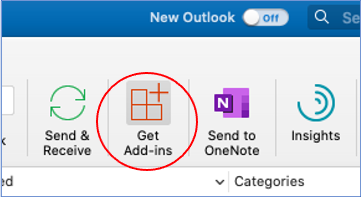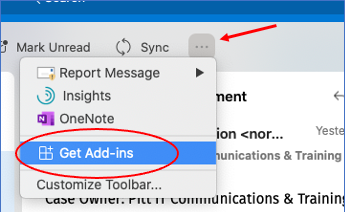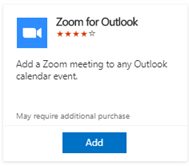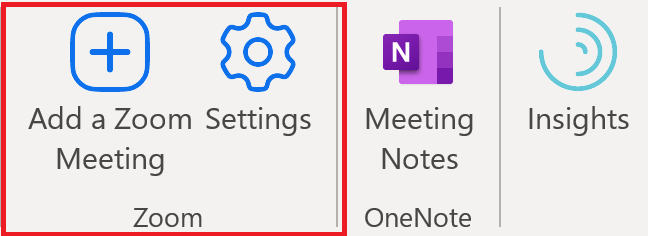From Outlook
To schedule meetings from Outlook, you first need to install the Microsoft Add-In for Zoom using the steps below.
1. Open Outlook and click Get Add-Ins.
Windows:

Mac with Old Outlook:

Mac with New Outlook:

2. In the Search Add-ins field at top right, type Zoom for Outlook, then press Enter.
3. In the search results, find the Zoom for Outlook add-in (make sure it has this exact title), click Add, then click Continue.

4. After the add-in has been installed, you can access it from a meeting window in Outlook. Start a new meeting request, then click Add a Zoom Meeting from your Outlook toolbar.
Windows and Mac with Old Outlook:

Mac with New Outlook:
Click the New Event button. 
Then in the New Event window, click […] and select Zoom -> Add a Zoom Meeting.

5. You will need to sign in to the Add-In. Click Sign in with SSO near the bottom of the login screen. Enter pitt in the domain field and click Continue, then sign in via Pitt Passport.

6. Proceed with scheduling your meeting.
Note: If you have the older Zoom Plugin for Outlook installed, you should remove it because it is no longer supported. The old Zoom plugin looks like this in your Outlook toolbar.

To remove it, click File, then Options, then Add-Ins, and then select COM Add-ins from the Manage drop-down menu. Select ONLY the Zoom Outlook Plugin (make sure to deselect all other plugins that you do not wish to uninstall) and click Remove.